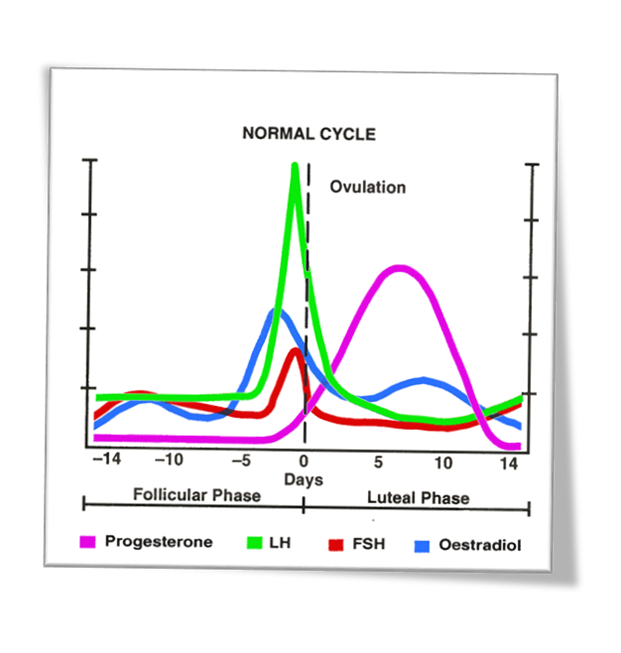While it might seem straightforward, conception involves a
surprisingly complicated series of steps. For conception to occur, not
only is timing vital, but certain female and male processes need to fall
into place for a healthy pregnancy.
Human reproduction is the coming together of two cells (gametes): an
ovum produced by the female, and a sperm produced by the male. The
fusing of the two gametes is called fertilisation, and the resulting
cell is called a zygote. Each gamete contributes half the genetic
material present in the zygote, half the genetic material is provided by
the female and half by the male.
The reproductive cycle in females is known as the menstrual cycle.
The cycle is normally 28 days in length but can vary from 21 days to 36
days, or longer. Ovulation occurs at approximately Day 14 in a 28 day
cycle. When an ovum is present, there is a relatively short period of
approximately 24 to 48 hours when the woman is fertile. During this
fertile period, sperm must be present in the fallopian tube and be able
to reach the egg. The fallopian tubes are tubes that extend from the ovaries to the uterus, with the uterus being the muscular organ located between the bladder and rectum in female pelvis. Only one sperm is required to fertilise the ovum but
for this to occur there must be a minimum of 40 million sperm per ml of semen deposited in the vagina.
With the help of FSH (a hormone secreted by the brain), follicles (cyst like structures on the ovary surface) are stimulated to grow (red line on diagram below). Each follicle contains an egg, and there may be as many as 6 follicles stimulated to grow. The steroid hormone oestradiol is secreted within the follicle and provides a nurturing environment for the developing egg (blue line on diagram below).
As development proceeds the biggest follicle is able to scavenge all the FSH "starving" the other sister follicles which subsequently die. This leads to the development of a single dominant follicle. This process is complete by Day 10 of the menstrual cycle.
When the dominant follicle has reached maturity (about cycle day 12),
it signals the brain to release a burst of the luteinizing hormone
(green line on diagram below). This hormone starts a process called ovulation
that leads to the rupturing of the follicle within the next 40-48 hours.
On rupture, the contents of the follicle including the single mature
egg pour into the fallopian tube.
Sperm are produced in the testes, the male reproductive organs. The testes are located outside the main body cavity in the scrotum. The testes also produce the male sex hormone testosterone. Boys start producing sperm at puberty (approximately 15 years of age), and most men have mature sperm into old age. Sperm are made at the rate of about 300 million per day, and live about 48 hours after being deposited in the vagina.
The sperm pass out of the testes into the male reproductive ducts
where they are suspended in secretions which form semen. The average
volume of semen for each ejaculation is 2.5 to 6mls, and the average
number of sperm ejaculated is 40-100 million per ml.
If semen is ejaculated into a female's vagina, millions of sperm swim up from the vagina through the cervix and uterus to meet the egg in the fallopian tube. It takes only one sperm to fertilise the egg. Of the many millions (up to 200 million) that started the journey only several thousand survive to the fallopian tube when the egg arrives. One single sperm detects the egg and penetrates the outer egg membrane and is engulfed by the egg cytoplasm, a gel-like fluid inside a cell where chemical reactions occur. The process of fertilisation begins and within 24 hours cell division occurs. The journey down the fallopian tube takes 5/6 days in which time the fertilised egg has become a 130-160 cell structure known as a blastocyst.
The remains of the original ovulated follicle becomes the corpus luteum which can be described as a mass of cells that forms in the ovary and secretes a hormone called progesterone (pink line on diagram below). Progesterone helps prepare the uterus for when the blastocyst arrives, 6-8 days after fertilisation.
The blastocyst finds a suitable area, hatches out of its shell (zona pellucida) and buries itself into the uterine lining. This is the process of implantation. The blastocyst secretes a hormone (chorionic gonadotrophin) that signals to the mother that the egg is implanted and is growing. This hormone stimulates the corpus luteum to continue to secrete progesterone.
If the blastocyst does not implant or is not viable this stimulation does not occur. The corpus luteum starts to regress (shrivel and die) by day 21 or 22 and progesterone levels fall (pink line on diagram below).
Soon after, the process of menstruation (shedding of the uterine lining) occurs and the cycle starts again. On average only one in five cycles in which fertilisation has occurred will result in implantation and ongoing pregnancy.
